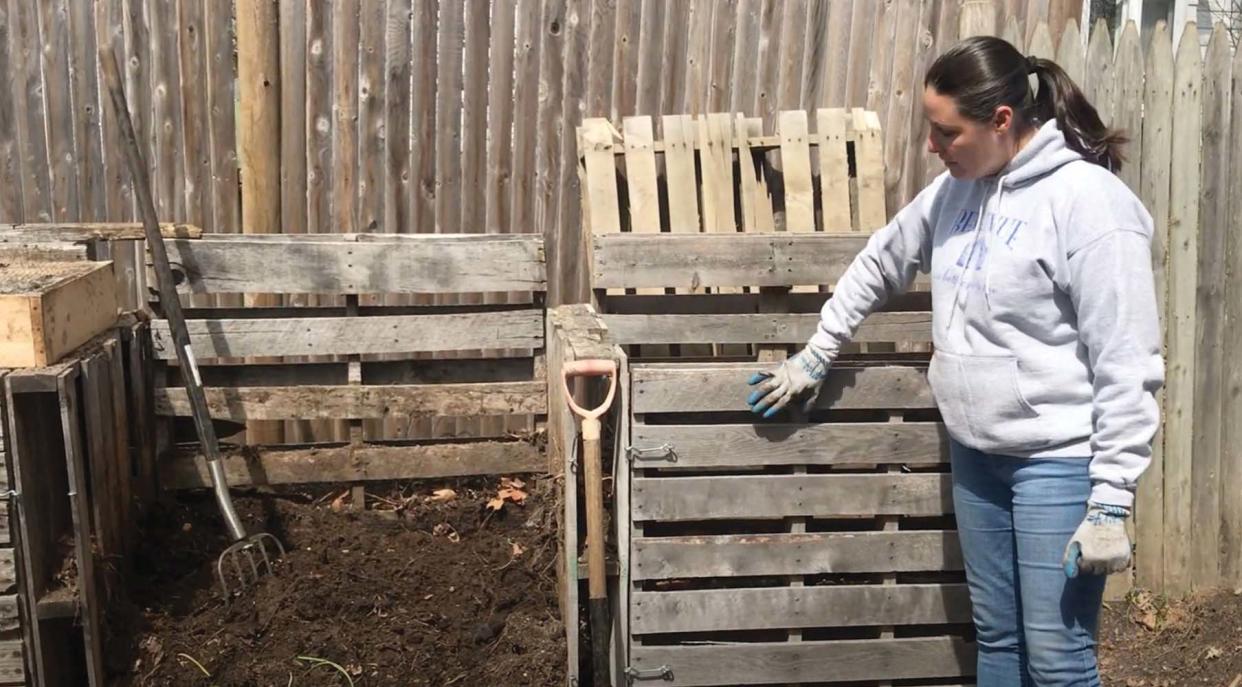Gardening Central Mass.: Finding joy at the bottom of a compost pile

I love compost. I love it so much that on my first date with my husband, I talked about compost. What’s more exciting than transforming food scraps destined for a landfill into something useful for our gardens and good for the environment?
In the U.S., organic material we could compost — produce peels, eggshells, coffee grinds, nutshells, newspaper, cardboard, and more — makes up 20 to 30 percent of what we throw away. Moldering in landfills, this waste emits methane, a potent greenhouse gas with a shorter lifespan than carbon dioxide but around 100 times the initial warming power. Because composting can cut down on these emissions, municipalities across the country have begun incorporating curbside composting into their waste management plans, and many people have started composting at home.
Recently, a colleague shared that her own adventures in at-home composting aren’t going as she hoped. Every other day or so, she trudges a stainless-steel compost pail from the kitchen to a corner of her now-frozen yard where she hucks the pail’s contents onto a heap and walks away. She says her compost pile typically smells bad and looks nothing like usable, fertile garden soil — the desired outcome of composting. She’s resolved to keep at it, but winter has her worried. Is her compost pile even working?
It may come as a surprise, but even in high summer, a compost pile shouldn’t smell bad. If it does, chances are it’s not getting enough of what it needs — water, oxygen, and a blend of green and brown organic materials. Green materials, rich in nitrogen, include items like produce scraps, tea bags, and fresh grass clippings. Brown materials, items like dry newspaper, dead leaves, and sawdust, contain lots of carbon. A balance of these essentials creates ideal conditions for microorganisms to thrive. Through a natural process known as decomposition, these microorganisms recycle organic matter. It’s a “trash to treasure” transformation perfected by nature. Our composting systems simply speed it up.
When I compost at home, I like to use a three-bin system. I made the bins by connecting wood pallets into squared-off stalls. Because they have slats, the pallets work perfectly to contain compost while letting in enough oxygen so it can breathe. In the first bin, I regularly dump green and brown materials from my kitchen and yard. About twice a year, I move the contents of the first bin into the second. By this point, the green materials have broken down, but large chunks of brown materials, usually twigs and plant stems, remain. After six months in the second bin, I screen my compost into the third. When it reaches the third bin, my compost is gorgeous and nutrient rich. I can sift it through my fingers. Pieces are uniform in size and ready for use.
Dedicating a portion of my yard to this three-bin composting system works for me. But if you don’t have the space or would prefer more discreet methods, there are lots of creative ways to make compost and inexpensive DIY systems that could meet your specific needs.
Whether you’re composting for the first time or trying out new methods, there is no need to wait for spring to get started. Compost can be maintained through a Massachusetts winter. Insulating a compost pile by covering it with a tarp or ringing the inside of a compost bin with sawdust or dried leaves can help keep your compost active as you continue to feed it with scraps through the cold season.
Composting doesn’t have to be another chore you resolve to do in the new year. It can be fun and rewarding to think that you (and the microorganisms in your pile or your bin) are creating something valuable when you compost. Making compost saves you money you might have spent on bagged soil. You can add compost to a vegetable garden or repot a houseplant with it. In the fall, top dress your lawn with compost to promote healthy soils that retain moisture and reduce reliance on chemical fertilizers. So, don’t miss out on one of the best things about compost — enjoying all it can do for you!
Gardening Central Mass. is written by the team at New England Botanic Garden at Tower Hill. Located on 171 acres in Boylston, New England Botanic Garden is one of the region’s top horticultural resources. All year long, garden visitors experience the wonder of plants, learn about the natural world, and make joyful connections. There is so much growing at the garden. Discover it today at www.nebg.org. The column will be published on the third Sunday of the month.
This article originally appeared on Telegram & Gazette: Gardening Central Mass.: Finding joy at the bottom of a compost pile

